|
10 Gadgets & Tech we can look forward to in 2011

Oxygen O Series iPhone Dock Car Receiver: Oxygen Audio will be releasing a new car entertainment system that fully integrates with your iPhone.
ElectroHub, LG Optimus 2X aka LG Star, Ultrasonic Touchless Input technology, PlayStation Phone, Samsung Galaxy Player, MacBook Pro, 3D mobile TV, and Nintendo 3DS.
read more... |
Improving COMMUNICATION Skills
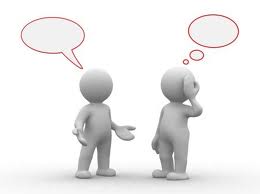
Communication Methods,
Elements of Communication - Speaking, Listening,
Distortion in Sending and Receiving Messages,
Listening skills - a key to effective communication,
Improving Presentation Skills,
Leadership Communications Skills,
Example - Leadership Credo Exercise.
read more...
|
|
|
Nuclear medicine

Nuclear medicine is a branch or specialty of medicine and medical imaging that uses radionuclides and relies on the process of radioactive decay in the diagnosis and treatment of disease.
In nuclear medicine procedures, elemental radionuclides are combined with other elements to form chemical compounds, or else combined with existing pharmaceutical compounds, to form radiopharmaceuticals. These radiopharmaceuticals, once administered to the patient, can localize to specific organs or cellular receptors
This property of radiopharmaceuticals allows nuclear medicine the ability to image the extent of a disease-process in the body, based on the cellular function and physiology, rather than relying on physical changes in the tissue anatomy. read more...
|
|
|
11 Benefits of Drinking Water
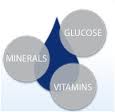
Drinking a healthy amount of water is vital to your health.
You can never imagine just by drinking a healthy amount of water, you gain tremendous health benefits, and sometimes you can even throw away your migraine medicine or pain killer.
read more...
|
Software Testing - Bug Life Cycles

“A computer bug is an error, flaw, mistake, failure, or fault in a computer program that prevents it from working correctly or produces an incorrect result. Bugs arise from mistakes and errors, made by people, in either a program’s source code or its design.”
The duration or time span between the first time bug is found (‘New’) and closed successfully (status: ‘Closed’), rejected, postponed or deferred is called as ‘Bug/Error Life Cycle’.
read more...
|
|
|
|
Detailed Articles |
|
10 Gadgets & amp; Tech we can look forward to in 2011
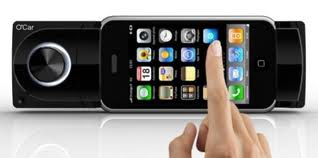
Oxygen O Series iPhone Dock Car Receiver:
With this Oxygen Audio, the iPhone slips into a small dock and fits into the front, turning it into the system’s interactive faceplate. Oxygen Audio currently offers a few car stereo apps in the app store so we’re assuming the Oxygen O series will also be coupled with the same or newer user-interface app.
The O series line provides access to the iPhone’s entire iTunes collection, hands free calling and access to apps such as GPS, Google maps and Sirius/XM Satellite Radio. Oxygen claims that while connected to the system, the device will charge the battery and allow users access to any app aside from the aforementioned titles.
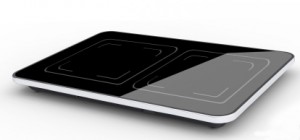
ElectroHub is a new charging station that will offer compatibility for a huge amount of devices including the TV remote, toys and smartphones. Similar to the Powermat chargers, ElectroHub requires additional add-on cases to make your smartphones compatible although it will charge tons of other gadgets with its use of AA and AAA batteries.
It will charge up to six devices at one time (including smartphones) and works by replacing a gadget’s original AA & AAA batteries with ElectroHub branded batteries. By doing this all of your AA & AAA supported devices will become compatible.
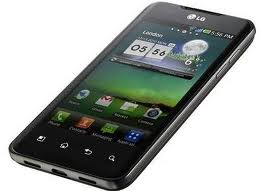
The LG Optimus 2x will be the world’s first dual-core smartphone and will be running Gingerbread (Android 2.3) when it’s released. We’re expecting this phone to be crazy snappy with a 1GHz dual-core processor and Nvidia Tegra 2 chip. The display is 4 inches, will play full HD video and has HDMI mirroring for output to a bigger screen.
Under the hood, the Optimus has a 1500mAh battery, 8GB of memory with the option to expand up to 32GB. It also has accelerometer and gyro sensors with both a front (1.3MP) and back facing (8MP) camera and LED flash. And, we expect it to record in 1080p. All in all, this device looks pretty sexy on paper. Engadget released a short video of the device below.
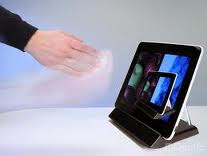
Elliptic Labs is demo-ing their ultrasonic touchless input technology this year at CES and it looks super cool. It’s similar to the technology built-in to Microsoft Kinect that allows users to execute actions without physically touching the device or a controller.
This isn’t the first time we’ve seen these type of concept-demo, however, we might be seeing the touchless technology actually integrated into a lot of devices in 2011. Elliptic Labs will be showing off their touchless gesture user interface on monitors, tablets, iPad docking stations and stand-alone USB devices.
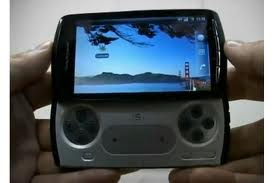
PlayStation Phone: Sony Ericson’s new Android-PlayStation phone, code-named Zeus Z1 is said to offer five free games and a gorgeous AMOLED display.
This device may be packing some serious fun for gamers although there hasn’t been much info released yet. Gamers will likely be able to download gaming apps from the PlayStation library and will possibly get some nifty integration with Sony consoles.
Sony Ericsson will be using its established Bravia brand name from its high-quality flatscreen TV’s” This will be a device to watch in 2011. The prototype has a PlayStation app and seems to be running Android Gingerbread OS.
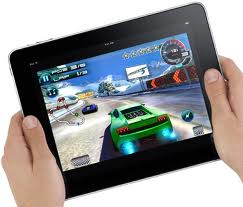
The iPad 2 rumour mill is now completely full, and from what we’ve heard, the new specs sound great. Based on the rumours, the newest iteration of the iPad will sport both a front & back facing camera, a lighter & smaller body, USB ports, a newer display technology and a new 3-axis gyroscope.
The latest news released today, stated that Apple may be answering our prayers with a new anti-smudge treatment. It’s probably my biggest complaint with the iPad, the constant wiping of the screen is somewhat annoying and kinda gross. Along with the anti-smudge treatment, there may also be an anti-reflective coating that aims to reduce the glare in direct sunlight.
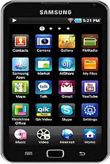
If your main method of communication is email and Twitter, you’d be better off with a data-only device like the new Samsung Galaxy Player. This device is a paired down version of the Samsung Galaxy S minus the phone and with more of an emphasis on the music player.
I’m one of those people who removed the phone icon from my dock and replaced it with email and Twitter so I’m personally a fan of devices exclusively for data nuts.
The Samsung Galaxy Player has a Micro SD slot, 4inch Super AMOLED display, 1Ghz processor, front & back facing camera and runs on Android 2.2. It will also comes in 3 flavours; 8GB, 16GB or 32 GB.
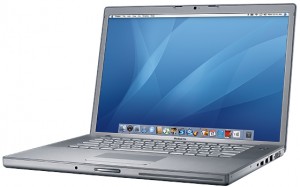
Apple fans are dying to get a peek at the new MacBook Pro likely slated to be showcased in April. As we mentioned, we’re expecting the new MacBook Pro to drop the standard hard-drives and move to SSD (solid state drives), possibly even giving users a bump up in storage.
There’s also another juicy rumour that Apple will be adding a new high-speed connection type; Intel’s Light Peak. The new technology (Light Peak) will give users a super fast way to transfer data. Based on the information we have on Light Peak, transfers can get up to about 10 GB per second bi-directional. And, like we’ve seen in the new Macbook AIRs, going to the SSDs means more room for batteries and additional goodies.
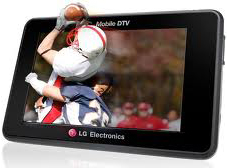
LG has designed a tiny 3D TV that appears to be approximately the size of an iPhone, and is LG’s smallest 3D TV in the line up.
While we don’t have much information on it now, we do know it will be powered by a LG2161R MDTV chip with NRT (non-real Time) technology, and its display will be in 3D. Based on the pic, LG’s mini 3D TV also sports an external retractable antenna.
LG has said the device will be able to receive 3D TV broadcasts — even while flying down the freeway in your Lamborghini. LG’s new device will receive a 3D broadcast while users are moving at speeds of up to 200/km per hour. This means your daily commute on the subway just got way cooler.
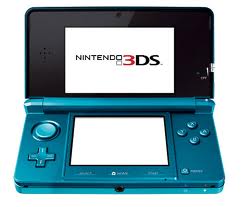
Nintendo brings gamers the 3D experience without the use of corny 3D glasses. This new 3DS will come with six augmented reality cards, a touch pen, 360 degree trackpad, 2GB SD card, WiFi and gyro & motion sensors along with a 0.3 MP camera. It looks similar to past versions of the Nintendo DS however the 3DS will reportedly stream 3D TV. Sweet!
Games will be downloaded from the 3DS Virtual Console but will also work with DS and DSi cartridges. I’ve never owned a DS but the idea of downloadable games and 3D TV makes this device really appealing. We should note that Nintendo recently warned consumers that children under the age of six should not be using its 3D technology, in fact they won’t even allow children under 6 to try their demos. Kids under six can however play the device in 2D.
Article Source
|
|
|
 Communication Methods Communication Methods
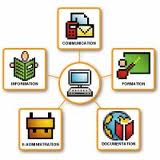
Experts say that communication is composed of different methods: words, voice, tone and non-verbal clues. Of these, some are more effective in delivering a message than others. According to research, in a conversation or verbal exchange:
Words are 7% effective
Tone of voice is 38% effective
Non-verbal clues are 55% effective.
Non-verbal clues include:
.Body language (e.g., arms crossed, standing, sitting, relaxed, tense),
.Emotion of the sender and receiver (e.g., yelling, speaking provocatively, enthusiastic),
.Other connections between the people (e.g., friends, enemies, professional similarities or differences, personal similarities or differences, age similarities or differences, philosophical similarities or differences, attitudes, expectations).
One of the classic examples of great verbal communications is Dr. Martin Luther King's I Have a Dream speech.
Why was it such a great speech? It was filled with powerful visual images that provoke strong emotions, delivered with passion by someone who captured the dreams of an entire race. Over time, the speech has transcended its original message to be a message of hope for all people, regardless of race.
 Communication Elements Communication Elements
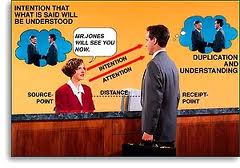
Elements of Speaking
* Body language
* Voice quality
* Intention
* Manner: directness, sincerity
* Dress and clothing (style, color, appropriateness for situation)
* Visual aids, animation
* Eye contact
* Emotional content, energy, strength
* Self-concept
* Concept of others
* Listening, hearing the underlying message
* Speaking from the heart
* Energy
* Setting, time, place, timing
* How the messenger holds the message
* Sensitivity
* Rhythm and pacing
* Attitude and confidence
* Rapport
* Agenda
* Purpose of communication - knowing what you want to communicate
* Clarity
* Silence, centering, looking
Elements of Listening
* Attentiveness to speaker
* Eye contact
* Intention be fully awake and aware
* Openness: to other person and your own
* Paying attention
* Listening to yourself
* Feedback
* Body language
* Change in pattern
* Expectations about person speaking, about their message, about their agenda
 Distortion in Sending and Receiving Messages Distortion in Sending and Receiving Messages
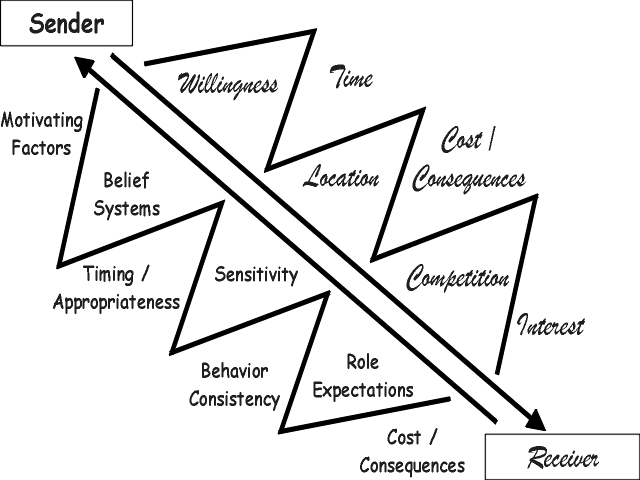
Notice that between the sender and the receiver the path appears to be straight. However, this is rarely the case. There are many different ways to distort the message or to filter it (both in delivering the message and in receiving the message). All of the distortions can occur for both the listener and the receiver.
Improving verbal communications requires first that we understand that communication is rarely perfect or clear in and of itself. We must learn to listen better and speak more clearly. We must also check whether our message is delivered correctly and whether we have heard a message clearly.
 Improving Presentation Skills Improving Presentation Skills
Making effective presentations to groups or key individuals is a regular part of an executive's job. Delivering a clearly understandable message that gains the support of the listeners obviously requires expertise in public speaking. Less obviously, it requires that you understand the perspective of your audience and be willing to adjust your presentation based on feedback during the session.
Experts tell us that public speaking ranks highest on the list of situations people fear most (followed by death!). Overcoming this fear requires education and practice, practice, practice!
Some tips for improving presentation skills:
1. Know your subject! This is most important.
2. Prepare for the speaking situation (outline, writing the entire presentation, delivering it to friends or whatever works for you). Even professional public speakers take time to prepare themselves.
3. Prepare outlines and overheads to help develop your confidence in your presentation part of knowing your topic well).
4. Have your outline (or overheads, slides or note cards) with you to refer to as you make the presentation and to trigger your thoughts as you speak.
5. In the early stages of your preparation, ask someone you trust to listen to your presentation and give you honest feedback in a one-on-one situation. Ask them what works well and what needs improvement. The more important the results of your presentation are to you, the more important it is to get help in refining your presentation.
6. Take classes where you are able to develop presentations and have them critiqued (e.g.,classes in public speaking or verbal presentation skills, Toastmasters).
7. Tape your presentation (videotape is best) and ask others to critique your presentation. Watch yourself and learn to look for subtle body language clues to your confidence or insecurity.
8. Talk to people you respect about how they learned to speak well. Ask them to coach you (if that is appropriate) or try to find someone you admire who will work with you.
9. When you are confident, relaxed and enthusiastic about your topic, that comes through strongly to your audience. Remember how much comes through non-verbal clues.
10. Ask for feedback from your audience about your presentation and pay attention to what they say.
11. In a management presentation especially (e.g., to present your new budget or present sales information), stop occasionally to ask if people understand what you have said.
12. And, most of all — Practice, practice, practice!
Article Source
|
|
|
Nuclear medicine
Diagnostic medical imaging:
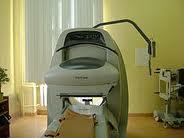
In nuclear medicine imaging, radiopharmaceuticals are taken internally, for example intravenously or orally. Then, external detectors (gamma cameras) capture and form images from the radiation emitted by the radiopharmaceuticals. This process is unlike a diagnostic X-ray where external radiation is passed through the body to form an image.
There are several techniques of diagnostic nuclear medicine.
2D: Scintigraphy ("scint") is the use of internal radionuclides to create two-dimensional images.
Nuclear medicine myocardial perfusion scan with Thallium-201 for the rest images (bottom rows) and Tc-Sestamibi for the stress images (top rows). The nuclear medicine myocardial perfusion scan plays a pivotal role in the noninvasive evaluation of coronary artery disease.
The study not only identifies patients with coronary artery disease, it also provides overall prognostic information or overall risk of adverse cardiac events for the patient.

3D: SPECT is a 3D tomographic technique that uses gamma camera data from many projections and can be reconstructed in different planes. Positron emission tomography (PET) uses coincidence detection to image functional processes.
Maximum Intensity Projection (MIP) of a wholebody positron emission tomography (PET) acquisition of a 79 kg weighting female after intravenous injection of 371 MBq of 18F-FDG (one hour prior measurement).
Nuclear medicine tests differ from most other imaging modalities in that diagnostic tests primarily show the physiological function of the system being investigated as opposed to traditional anatomical imaging such as CT or MRI. Nuclear medicine imaging studies are generally more organ or tissue specific (e.g.: lungs scan, heart scan, bone scan, brain scan, etc.) than those in conventional radiology imaging, which focus on a particular section of the body (e.g.: chest X-ray, abdomen/pelvis CT scan, head CT scan, etc.).
In addition, there are nuclear medicine studies that allow imaging of the whole body based on certain cellular receptors or functions. Examples are whole body PET scan or PET/CT scans, gallium scans, indium white blood cell scans, MIBG and octreotide scans.
Hybrid scanning techniques

In some centers, the nuclear medicine scans can be superimposed, using software or hybrid cameras, on images from modalities such as CT or MRI to highlight the part of the body in which the radiopharmaceutical is concentrated. This practice is often referred to as image fusion or co-registration, for example SPECT/CT and PET/CT. The fusion imaging technique in nuclear medicine provides information about the anatomy and function, which would otherwise be unavailable, or would require a more invasive procedure or surgery.
Normal whole body PET/CT scan with FDG-18. The whole body PET/CT scan is commonly used in the detection, staging and follow-up of various cancers.
Abnormal whole body PET/CT scan with multiple metastases from a cancer. The whole body PET/CT scan has became an important tool in the evaluation of cancer.
Article Source
|
|
|
Top 11 Benefits of Drinking Water and How
Functions of Water in The Body
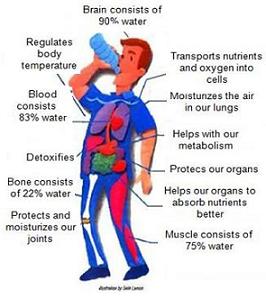
The human body is anywhere from 55% to 78% water depending on body size. A rule of thumb, 2/3 of body is consists of water, and it is the main component of human body. Did you know that your tissues and organs are mainly made up of water? Here is the %:
- Muscle consists of 75% water
- Brain consists of 90% of water
- Bone consists of 22% of water
- Blood consists of 83% water.
The functions of water in human body are vital. The water:
- Transports nutrients and oxygen into cells
- Moisturizes the air in lungs
- Helps with metabolism
- Protects our vital organ
- Helps our organs to absorb nutrients better
- Regulates body temperature
- Detoxifies
- Protects and moisturizes our joints
Every cell in your body needs water from head to toe. That is why it is so important to drink enough fluid. Take for example, brain consists of 90% of water, if you do not supply enough water to your body, your brain cannot function well, and you will get headache or migraine. Hence, next time, if you feel fatigue and headache, it may be the sign of dehydration.
Harmful Effects and Symptoms of Dehydration
The Harmful Effects Result from Dehydration:
- Tiredness
- Migraine
- Constipation
- Muscle cramps
- Irregular blood pressure
- Kidney problems
- Dry skin
- 20% dehydrated – Risk of death
Symptoms of Dehydration:
- Dark Urine – Dark Yellow or Orange in Color: Urine is generally pale yellow to clear when you have sufficient water intake. Dark color or strong smell indicates that you need to drink more water.
- Dry Skin: Skin is the largest body organ and requires its share of water.
- Thirst: Thirst is the most obvious sign that you're already dehydrated. It is always a good practice to drink more water when your are not thirsty, don’t wait until you're thirsty.
- Hunger: Most people mistake hunger for the indication to eat more, whereas in actual fact, they may be dehydrated. So before you have your meal, grab a glass of water.
- Fatigue: Water is a source of energy and gives you a boost in energy.
How much water should you drink a day to avoid dehydration? A common approach is drinking 8 glasses of water a day, is it sufficient? Learn about the truth of drinking 8 glasses of water here. Top 11 Health Benefits of Drinking Water
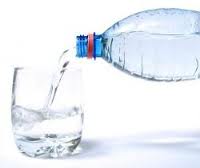
The functions of water in human body are vital. The water:
- Lose weight: Drinking water helps you lose weight because it flushes down the by-products of fat breakdown. Drinking water reduces hunger, it’s an effective appetite suppressant so you’ll eat less. Plus, water has zero calories.
- Natural Remedy for Headache: Helps to relieve headache and back pains due to dehydration. Although many reasons contribute to headache, dehydration is the common one.
- Look Younger with Healthier Skin: You’ll look younger when your skin is properly hydrated. Water helps to replenish skin tissues, moisturizes skin and increases skin elasticity.
- Better Productivity at Work: Your brain is mostly made up of water, thus drinking water helps you think better, be more alert and more concentrated.
- Better Exercise: Drinking water regulates your body temperature. That means you’ll feel more energetic when doing exercises. Water also helps to fuel your muscle.
- Helps in Digestion and Constipation: Drinking water raises your metabolism because it helps in digestion. Fiber and water goes hand in hand so that you can have your daily bowel movement.
- Less Cramps and Sprains: Proper hydration helps keep your joints and muscles lubricated, so you’ll less likely get cramps and sprains.
- Less Likely to Get Sick and Feel Healthy: Drinking plenty of water helps fight against flu and other ailments like kidney stones and heart attack. Water adds with lemon is used for ailments like respiratory disease, intestinal problems, rheumatism and arthritis etc. In another words one of the benefits of drinking water is that it can improve your immune system.
- Relieves Fatigue: Water is used by the body to help flush out toxins and waste products from the body. If your body lacks water, your heart, for instance, needs to work harder to pump out the oxygenated blood to all cells, so are the rest of the vital organs, your organs will be exhausted and so will you.
- Good Mood: Your body feels very good and that’s why you feel happy.
- Reduce the Risk of Cancer:Related to the digestive system, some studies show that drinking a healthy amount of water may reduce the risks of bladder cancer and colon cancer. Water dilutes the concentration of cancer-causing agents in the urine and shortens the time in which they are in contact with bladder lining.
Article Source
|
|
|
Software Testing - Bug Life Cycles
On successful logging the bug is reviewed by Development or Test manager. Test manager can set the bug status as Open, can Assign the bug to developer or bug may be deferred until next release.
When bug gets assigned to developer and can start working on it. Developer can set bug status as won’t fix, Couldn’t reproduce, Need more information or ‘Fixed’.
If the bug status set by developer is either ‘Need more info’ or Fixed then QA responds with specific action. If bug is fixed then QA verifies the bug and can set the bug status as verified closed or Reopen.
These are various stages of bug life cycle.

- New: When QA files new bug.
- Deferred: If the bug is not related to current build or can not be fixed in this release or bug is not important to fix immediately then the project manager can set the bug status as deferred.
- Assigned: ‘Assigned to’ field is set by project lead or manager and assigns bug to developer.
- Resolved/Fixed: When developer makes necessary code changes and verifies the changes then he/she can make bug status as ‘Fixed’ and the bug is passed to testing team.
- Could not reproduce: If developer is not able to reproduce the bug by the steps given in bug report by QA then developer can mark the bug as ‘CNR’. QA needs action to check if bug is reproduced and can assign to developer with detailed reproducing steps.
- Need more information: If developer is not clear about the bug reproduce steps provided by QA to reproduce the bug, then he/she can mark it as “Need more information’. In this case QA needs to add detailed reproducing steps and assign bug back to dev for fix.
- Reopen: If QA is not satisfy with the fix and if bug is still reproducible even after fix then QA can mark it as ‘Reopen’ so that developer can take appropriate action.
- Closed: If bug is verified by the QA team and if the fix is ok and problem is solved then QA can mark bug as ‘Closed’.
- Rejected/Invalid:Some times developer or team lead can mark the bug as Rejected or invalid if the system is working according to specifications and bug is just due to some misinterpretation.
Article Source
|
|
Itech Solutions |
|



























 Communication Methods
Communication Methods